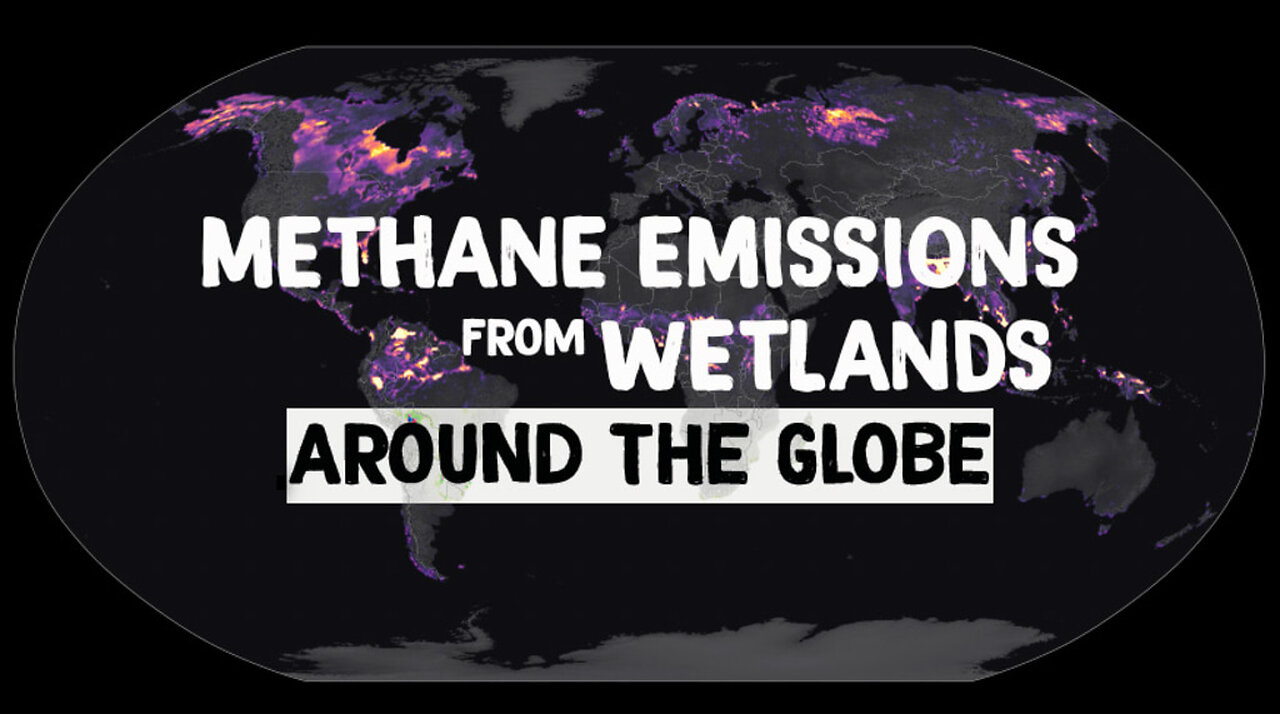Premium Only Content

Methane Emissions from Wetlands
Methane is an important greenhouse gas that contributes substantially to global warming. On a molecule by molecule basis, methane is much more efficient at trapping heat than carbon dioxide, the main driver of warming. Though human activities, including agriculture, oil and natural gas production and use, and waste disposal, collectively contribute the majority of methane to the atmosphere, about a third of total methane emissions comes from wetlands. Wetland habitats are filled with things like waterlogged soils and permafrost, which makes them sizable carbon sinks. However, as the climate changes, these carbon-rich soils are vulnerable to flooding and to rising temperatures, which can release more carbon to the atmosphere in the form of methane. Understanding methane emissions from natural sources like wetlands is critically important to scientists and policymakers who are working to ensure that changes in natural systems don’t counteract progress in combatting climate change made by reducing emissions from human activities.
This animation shows estimates of wetland methane emissions produced by the Lund–Potsdam–Jena Dynamic Global Vegetation Model (LPJ-DGVM) Wald Schnee und Landscaft version (LPJ-wsl). LPJ-wsl is a prognostic model, meaning that it can be used to simulate future changes in wetland emissions and independently verified with remote sensing data products. The model includes a complex, topography dependent model of near surface hydrology, and a permafrost and dynamic snow model, allowing it to produce realistic distributions of inundated areas. Highlighted areas show concentrated methane sources from tropical and high latitude ecosystems. The LPJ-wsl model is regularly used in conjunction with NASA’s GEOS model to simulate the impact of wetlands and other methane sources on atmospheric methane concentrations, compare against satellite and airborne data, and to improve understanding and prediction of wetland emissions.
-
 42:07
42:07
BonginoReport
4 hours agoNikki Haley's Hatred of Tulsi Gabbard Just Made Me a Bigger Fan (Ep.90) - 11/21/24
59K162 -
 28:41
28:41
Professor Nez
10 hours ago🚨BLOOD on their HANDS! The Man Biden & Kamala Flew In Finally Faces JUSTICE for Laken Riley
29.6K18 -
 1:06:27
1:06:27
2 MIKES LIVE
2 hours agoThe Mike Schwartz Show 11-21-2024
7.96K -
 15:07
15:07
PMG
11 hours ago $0.13 earned"President Trump's Cabinet is Amazing!"
13.2K -
 LIVE
LIVE
Vigilant News Network
14 hours agoHeavily-Vaxxed County Faces Grim Reality | The Daily Dose
1,012 watching -
 1:22:22
1:22:22
Game On!
15 hours ago $9.94 earnedRussell Wilson MVP? TNF Steelers vs Browns Game of the Year!
58.9K -
 13:57
13:57
This Bahamian Gyal
15 hours agoSo, now MIKA and JOE want to work with HITLER? Sunny Hostin was right!
36.1K39 -
 59:38
59:38
The Tom Renz Show
18 hours ago"MAGA & Unity With Pastor Bernadette Smith"
22.7K2 -
 2:12
2:12
Memology 101
15 hours ago $3.75 earnedTYT's Cenk Uygur DESTROYS deluded self-proclaimed election Nostradamus over FAILED prediction "keys"
20.1K14 -
 2:11
2:11
BIG NEM
15 hours agoMeet the NATIVE Tribe Of The Balkans Nobody Talks About
28K4